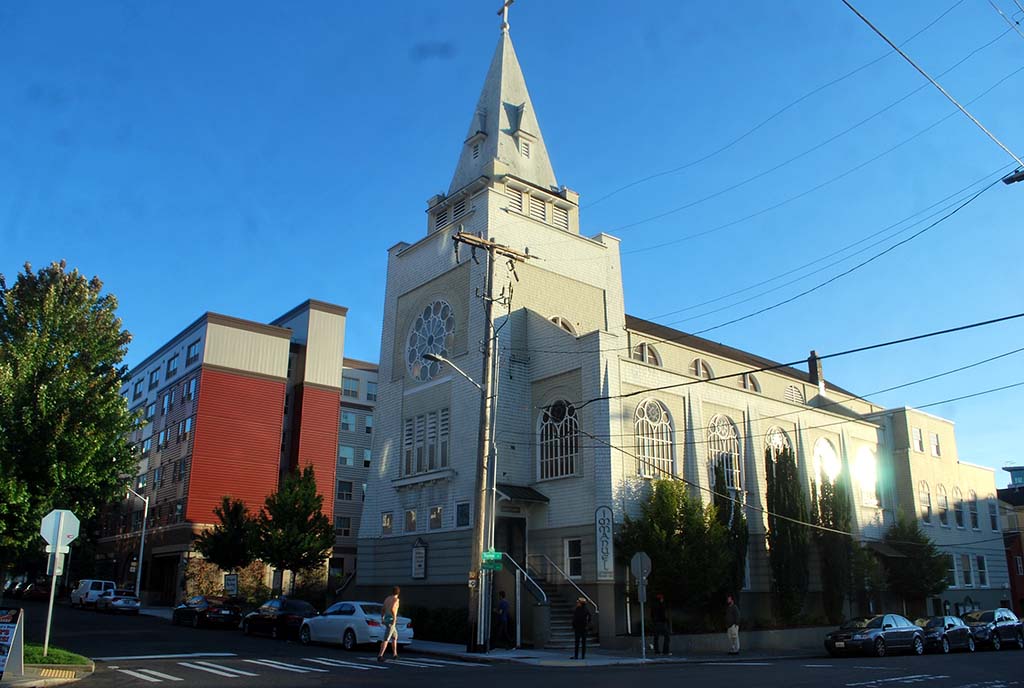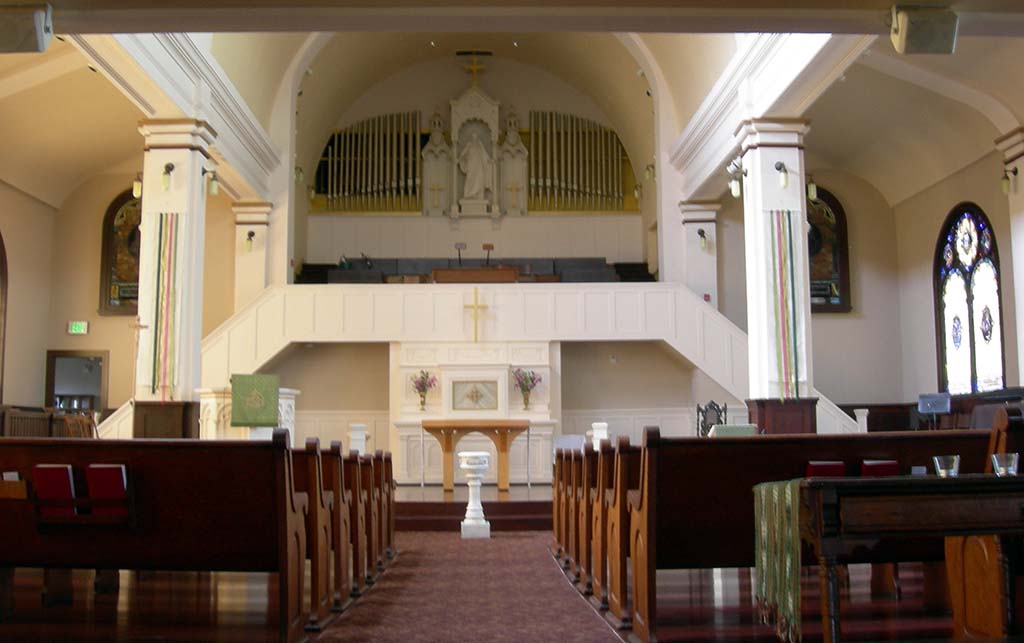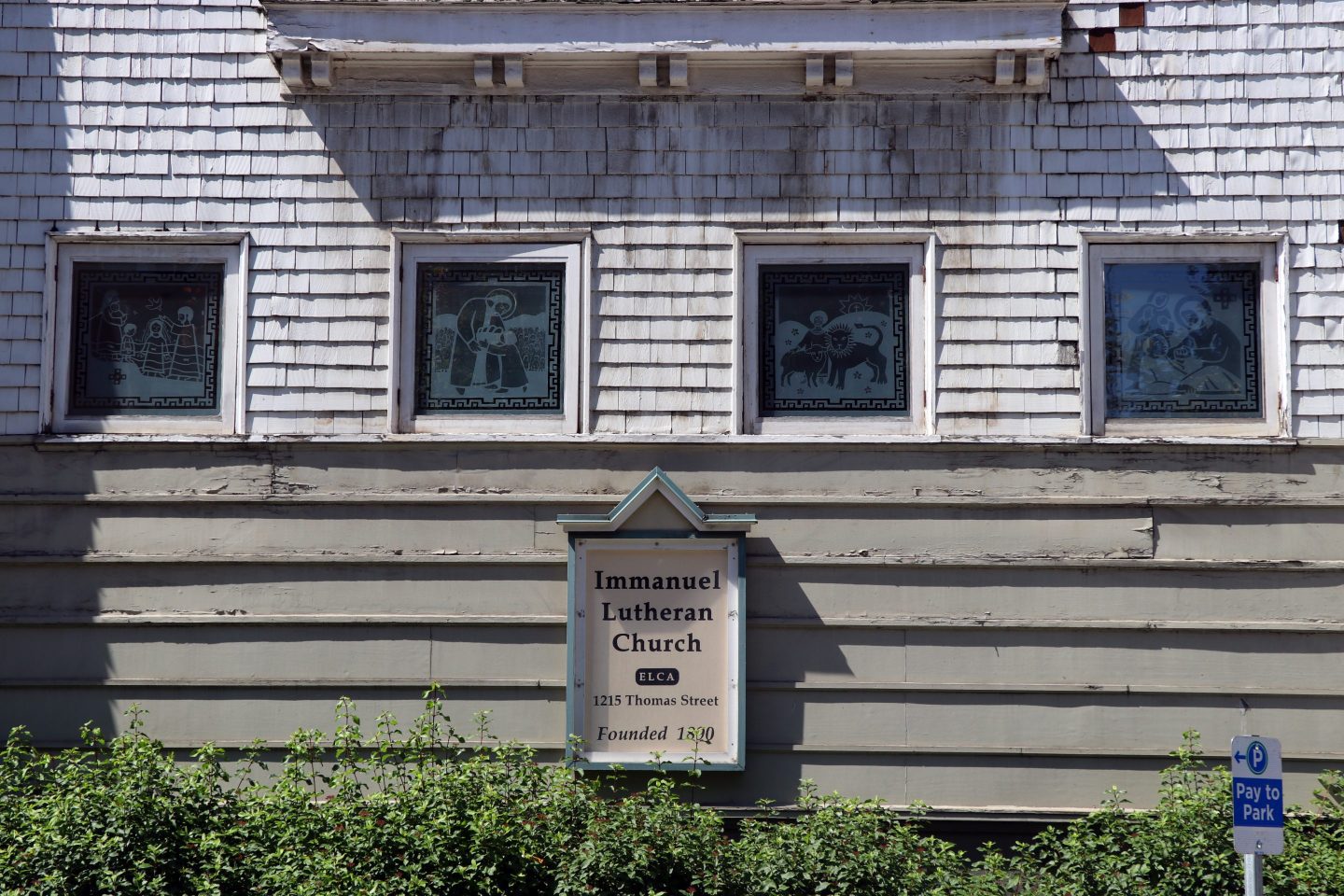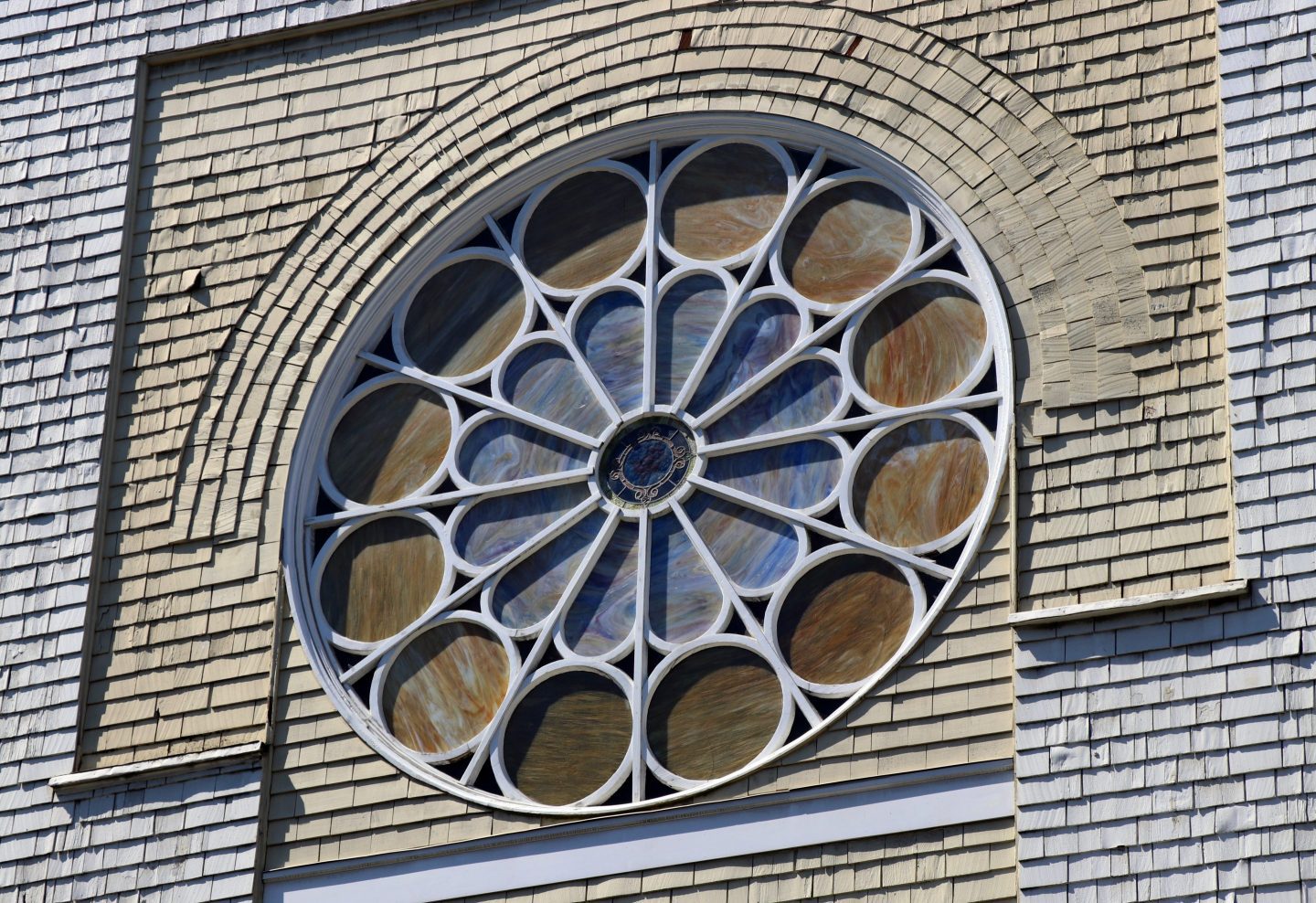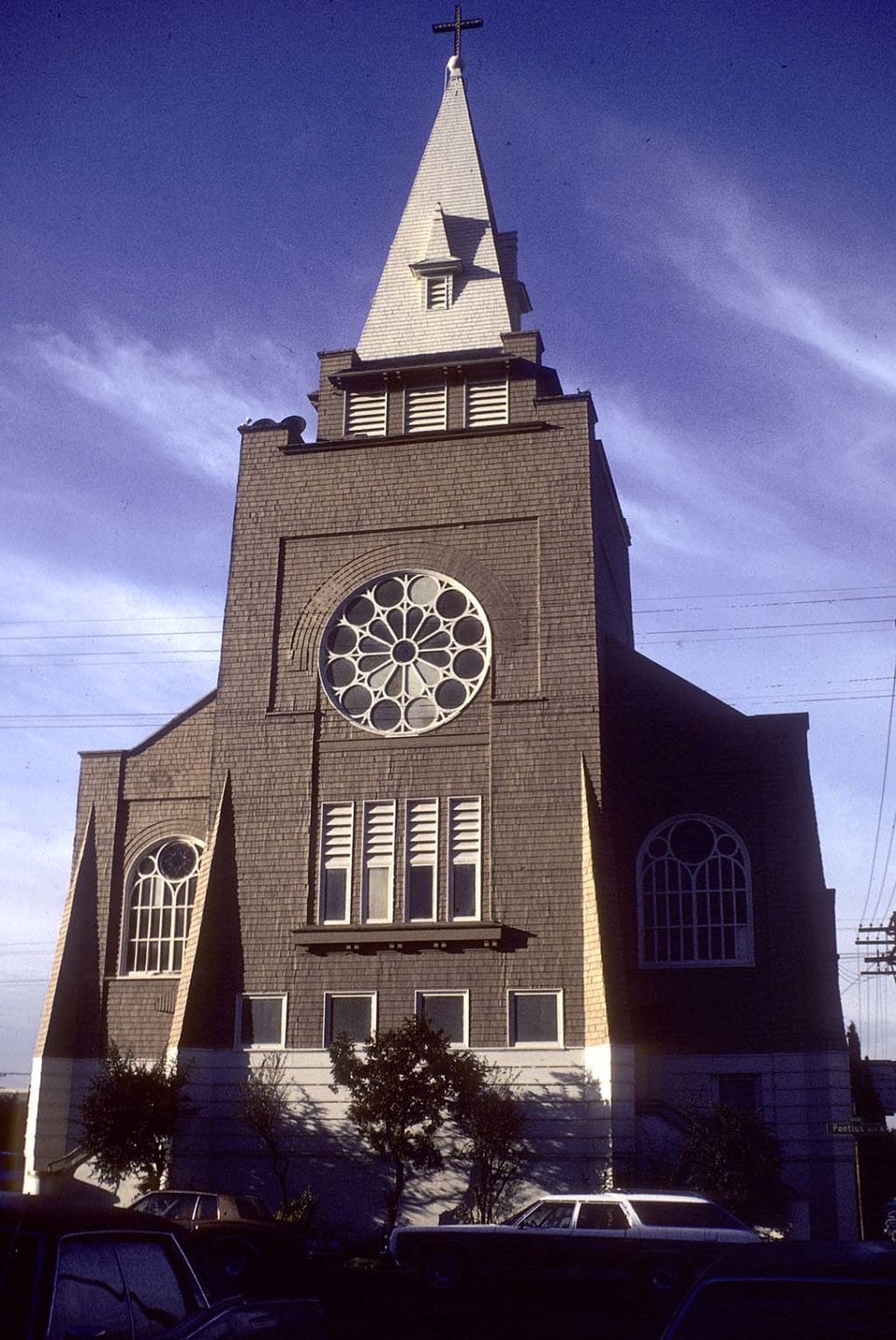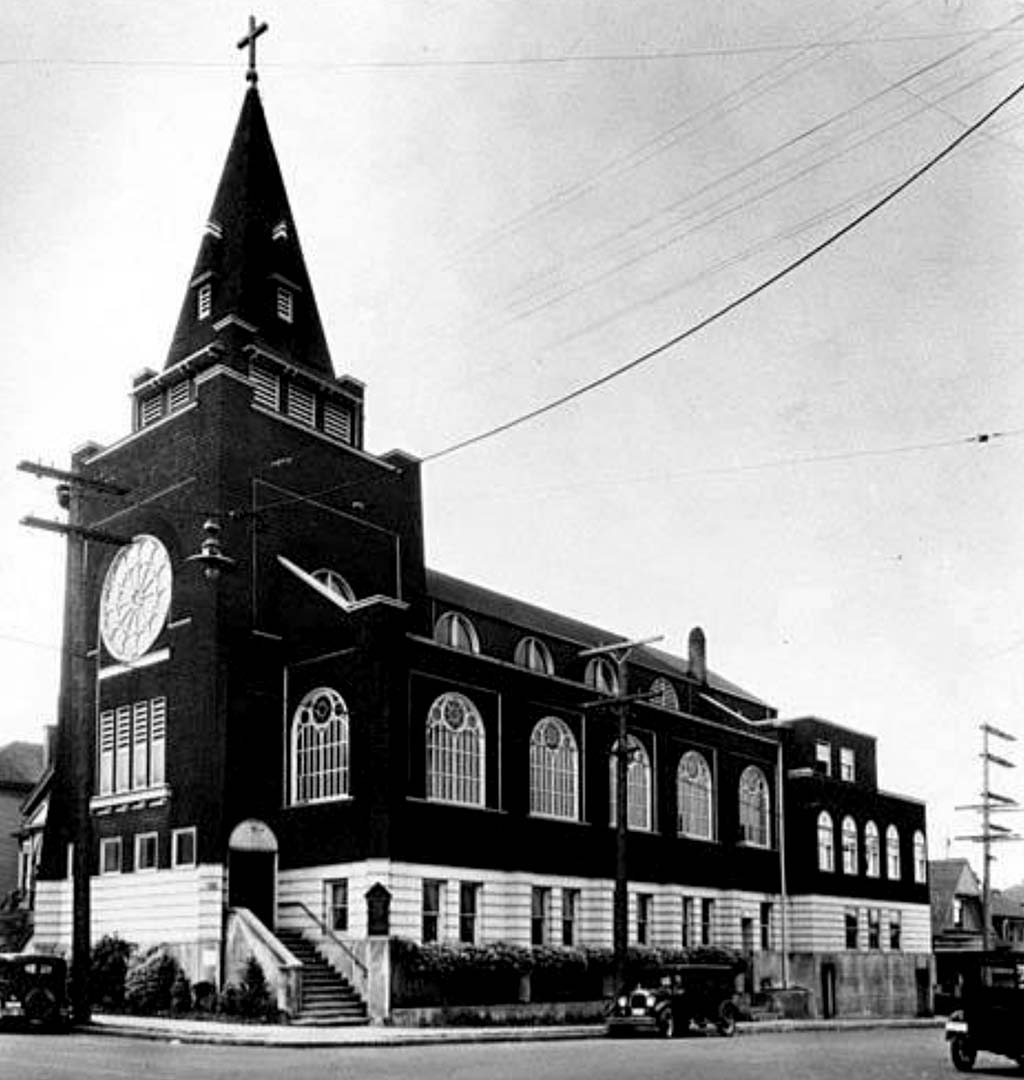-
Immanuel Lutheran Church
1215 Thomas Street
Thirty-three Norwegians started Immanuel Lutheran congregation in 1890 and built their first building at Minor Avenue and Olive Way in 1892. As attendance grew, the congregation opted to move, purchased the corner of Thomas Street and Pontius Avenue in 1907, and began to build. After completing the basement in 1908, the church ran out of money so held services in the below-grade room until it obtained a loan in 1911 to finish the structure. Architect Watson Vernon’s design reflects the church members’ Scandinavian and Germanic heritage.
Two bishops from the Norwegian State Church assisted with the dedication in 1912, when Immanuel had one of the largest Lutheran congregations on the West Coast. Three years later, the church bought a Kilgen pipe organ with the assistance of $1,000 from Andrew Carnegie, followed in 1919 and 1920 by the addition of a gymnasium, choir loft, and Sunday school rooms. Built entirely of frame construction on a concrete foundation, Immanuel Lutheran is the only frame church structure in the vicinity of downtown Seattle still used as a house of worship. In 1982, it was listed on the National Register of Historic Places.
